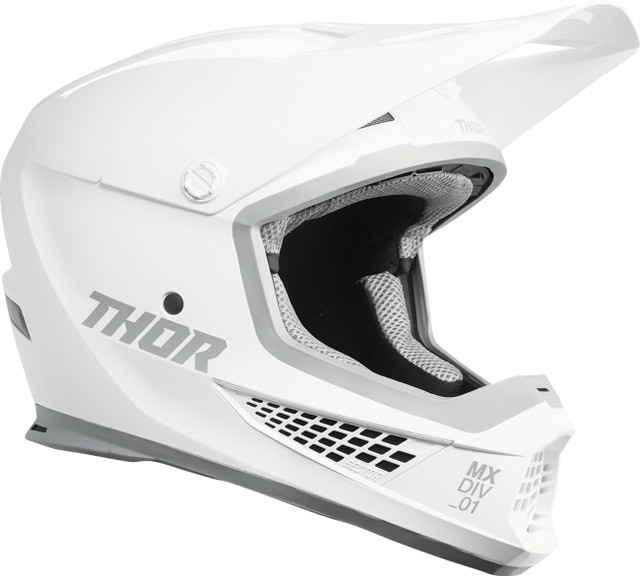Full-Face Versus Modular Helmets: Everything You Need to Know
Feb 5th 2024
Starting as early as the 1960s, the evolution of the modern offroading helmet, while slightly different across motorcycles, dirt bikes, eBikes, and so forth, presents today’s offroaders with a variety of options to suit their individual needs and preferences. Generally, most people (on two wheels especially) going more than 20 miles an hour are going to prefer full-face protection, so for today’s purposes, we’ll leave open-face helmets out of the picture. That leaves us with modular or truly full-face helmets to consider. Here’s a quick breakdown of the differences, along with how you can review your own situation to make the best decision.

First Off, What Are Full-Face and Modular Helmets?
With the exception of adjustable and/or detachable visors, full-face helmets are constructed as a single piece. In other words, once that thing is on your head, you are completely covered, and can only (significantly) expose your face by taking it all the way off.
In contrast, a modular helmet is made with a hinge that allows you to flip up the chinbar with the press of a button, exposing most or all of your face without taking the helmet all the way off. In a general sense, modular helmets are the “convertible of helmets,” whereas traditional full-face helmets are like a standard hard-top vehicle.
Key Differences Between These Helmet Types
You might already be thinking of the different applications, pros, and cons of each of these helmet types - let’s jump into a quick overview of how they’re different across various metrics.

Safety
While modular helmets have come a long way in terms of safety, full-face helmets are still regarded as the gold standard. Both helmet types are available from top brands and made with very high-quality materials and components, but the hinge joint of the modular helmet inevitably presents a weak point in the overall structural integrity.
Usability
The offroading and/or motorcycle community agrees with very little debate that, at least in terms of sheer convenience and usability, modular helmets are definitely superior. In fact, it’s the main reason people opt for them: you can flip your chinbar up with the press of a button to eat and drink, talk to people, cool off, wipe your face, and so on. Full-face helmets with adjustable visors can at least help you vent out some heat, but they don’t rival modular helmets in the other areas mentioned.
Perceived Noise
This is where it gets a bit interesting. It’s impossible to make a general statement as far as which helmet type is quietest, as your bike (touring bike with a windshield or crotch rocket going 80 mph?), how well the helmet fits, the brand, and many other factors can play into how much noise you’re dealing with. This is a bit of a contentious issue, with people making claims on both sides as to which is noisier, but the truth is that it’s circumstantial.

Weight and Size
While it’s not a guarantee, in the majority of cases, modular helmets are heavier because of the internal components required to allow for the hinge to operate. They also tend to have a larger face shield area, further contributing to the increased weight.
The Bottom Line: It Comes Back To You
There’s no definitive way to declare a “winner” in the full-face versus modular helmet discussion because success with either helmet is largely dependent on each rider’s personal preferences and needs. Where and how you ride, whether or not you wear glasses, whether you get claustrophobic, and many other factors can determine which helmet works best for you.
What we do know for certain is that, whichever helmet type you choose, it’s always best to seek out the top products from brands like Bell and Thor. Never settle for a poorly made helmet, as it’s the most important piece of safety gear an offroader can have.

